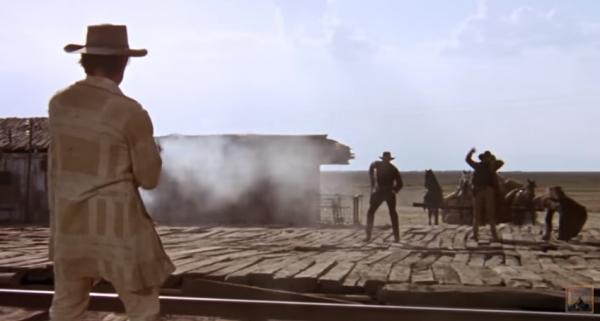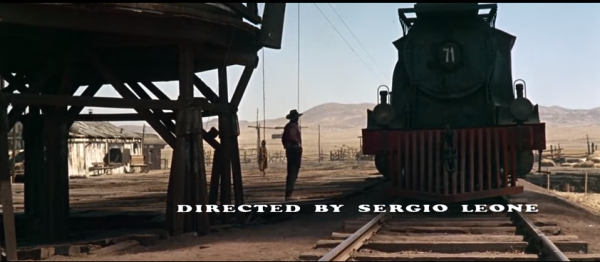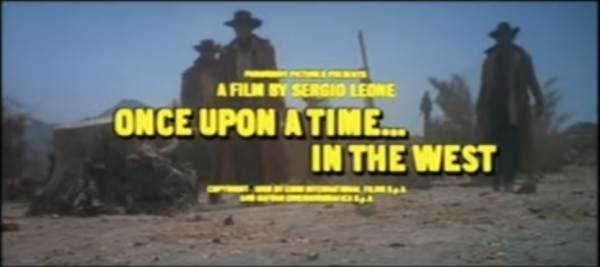
An interesting historic discussion of guns and gun control in the Old West published Monday by Smithsonian.com has some remarkable, albeit unintentional, revelations that apparently are aimed at shattering some myths, and it appears as the 50th anniversary of a masterpiece film about that period is looming.
Released in May 1968, Once Upon A Time in the West – the classic revenge tale directed by Sergio Leone – has garnered a cult following. It’s a story about the railroad, gunslingers, outlaws, murder and remorse. One of the main characters is a reformed prostitute, another a nameless harmonica-playing hero out to kill the man who killed his older brother, a slaying shown in flashbacks.

Part of the movie was filmed in Monument Valley, while the bulk was done in Europe. It’s a “spaghetti western” with a haunting music score, a few interesting plot twists, more gunplay than you ever saw in the real Dodge City, and a cast that included Henry Fonda, Charles Bronson, Jason Robards, Claudia Cardinale (with a dubbed voice), Keenan Wynn, Lionel Stander and cameos by Jack Elam and Woody Strode. It has been playing lately on cable.
More about the film in a moment.
The Smithsonian piece by Matt Jancer leads with a narrative about the famed Gunfight at the OK Corral, possibly the most famous actual shootout in the Old West. It discusses early gun control ordinances in western settlements, and in the process has some revealing facts.
When gun prohibitionists talk about turning the streets into “Dodge City” by relaxing today’s gun laws, Second Amendment advocates should actually shout in approval. According to the Smithsonian article:
“Historian Robert Dykstra focused on established cattle towns, recording homicides after a full season of cattle shipments had already passed and by which time they’d have typically passed firearm law. He found a combined 45 murders from 1870-1885 in Kansas’ five largest cattle towns by the 1880 census: Wichita (population: 4,911), Abilene (2,360) Caldwell (1,005), Ellsworth (929), and Dodge City (996).
“Averaged out, there were 0.6 murders per town, per year. The worst years were Ellsworth, 1873, and Dodge City, 1876, with five killings each; because of their small populations, their FBI homicide rates would be high. Another historian, Rick Shenkman, found Tombstone’s (1880 pop: 3,423) most violent year was 1881, in which also only five people were killed; three were the cowboys shot by Earp’s men at the OK Corral.”
By modern day Chicago standards (or Baltimore, Washington, D.C., Newark, Milwaukee or Detroit), Dodge City was pretty boring. Likewise Tombstone, where the Earp-Clanton feud may have been as much political as it was a conflict between bad and good, things were relatively peaceful. Even with the likes of James Butler “Wild Bill” Hickok, Wyatt Earp, Bat Masterson, Luke Short and the like roaming around, the Real West was actually far more peaceful than the Reel West.
There is something else in Jancer’s piece that deserves attention. He discussed prohibitive laws that focused on concealed carry, and this opens the door to discussion of a critical point about the right to bear arms. In those days, firearms were carried openly. Concealed carry was considered the act of a sneak, a scoundrel; someone to be avoided.
Which brings us back around to Once Upon A Time in the West; it was filled with characters that ought to be shot on sight, and they were by the end of the third reel. Most people in the Old West were just looking to improve their own lives. Farming, ranching, prospecting and construction were far more prevalent than gunslinging. Sure there were gamblers and outlaws, and there were frontier lawmen to deal with them. And, yet, Bronson’s harmonica-playing hero is the only character that carries his sixgun concealed under his coat in back. You can bet there were no concealed carry permits in those days, available only with proof of “justifiable need.”
There was accountability. Rustling, horse theft, robbery and other crimes landed people in prison, if not at the end of a rope. The Earps were prosecuted after the OK Corral shootout and absolved. Hickok was tried and acquitted for the killing of Davis Tutt in their classic street face-off in Springfield, Missouri in July 1865. Jack McCall was hanged for murdering Hickok in Deadwood in August 1876.
On the other hand, the James-Younger gang was shot to pieces in 1876 when they tried to rob the bank in Northfield, Minnesota. Years later, the Dalton gang was nearly wiped out when they tried to rob two banks simultaneously in Coffeyville, Kansas. Those incidents underscored the value of an armed citizenry. In those days, criminals didn’t get slapped on the wrist.

In Once Upon A Time in the West, the villain was dispatched by the good guy because there was no law and 911 didn’t exist. When Fonda passed away, his role as vile gunslinger “Frank” was said to be the only time he played the bad guy, but that wasn’t so. He was also the villain in Firecreek, a western he did with pal James Stewart that was coincidentally also released in 1968.
The western is uniquely American, yet it is popular entertainment around the globe. It talks about self-reliance, good-versus-evil, people against the elements, progress and individualism. Leone’s masterpiece rolled them all together a half-century ago to create a vivid classic that was pure storybook. And this year the story is 50 years old. The Constitution, with its Bill of Rights that includes the Second Amendment, is 229 years old this year.
One might say both have endured the test of time.